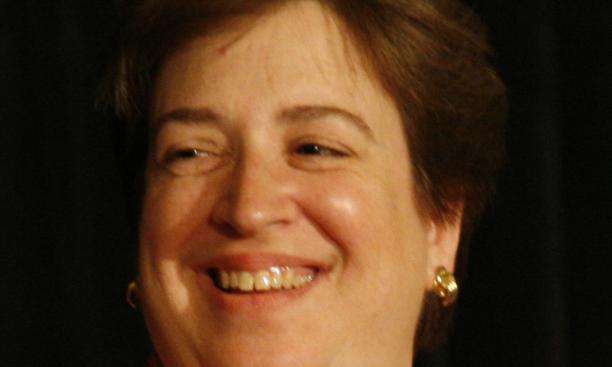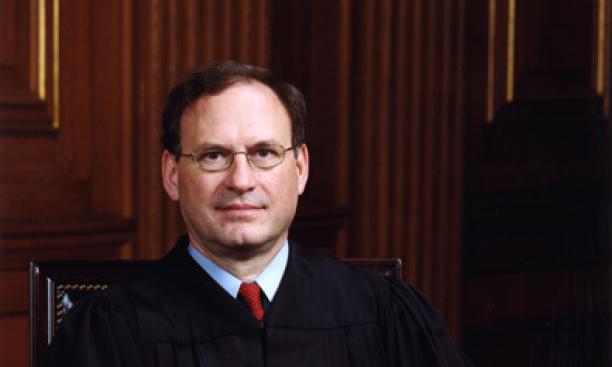




So it really didn’t surprise me during the languid summer here at the virtual PAW (my USB drive had changed from spring pedal pushers into that racy digital bikini) when, just as I got to the part in our last opus about Dead White Males, up popped a New York Times op-ed piece on another facet of the same topic. Noah Feldman, a noted Harvard Law School professor, begins by pointing out that following Elena Kagan ’81’s confirmation, the U.S. Supreme Court, only five years after having a plurality of white Protestant justices, now has exactly none. Now, subconsciously I probably knew that, but certainly hadn’t thought about it. How about you? Feldman’s cagey insight is to see this not from the angle of the ascendant Catholics and Jews now populating the court, but instead to note it as a triumph of the WASPs who set up the Constitution and planted the seeds of their own supercession.
And then he throws in the piece de resistance, which leads directly to the column’s mention here. He notes the latest three confirmed justices – Kagan, Sonia Sotomayor ’76, and Samuel Alito ’72 – and marvels that all of them graduated from Princeton, supposed “longtime bastion of the Southern Protestant elite,” within 25 years after the stinging lowpoint of Dirty Bicker. His succinct explanation: “In the 1960s, however, Princeton made a conscious decision to change, eventually opening its admissions to urban ethnic minorities and women,” based on the egalitarian ideals of Jefferson’s Declaration, Madison’s Constitution, and the resulting American emphasis on education, personal merit, and fair play.
While I have no quibble with Feldman’s argument as it stands, I think since Princeton is pointed out so particularly we really need to note that in the pantheon of historic WASPs, some were more (or less) radically inclusive and egalitarian than others. In the interest of thoroughness, we might note that there was a small hiatus of precisely 200 years between Madison’s matriculation and Alito’s. Bob Goheen ’40 *48, Doug Brown ’19, Jim Oates ’21, Harold Helm ’20, and their many supporters in the ’60s had significant tradition to use as a lever in the major changes they felt necessary at Princeton, but their course was complicated by supporters of the Old Princeton who had a good deal of inertia on their side as well.
Now, the personal egalitarianism of the Enlightenment didn’t just go on vacation after the Constitutional Convention and re-emerge in the aftermath of the traumatic World War II. Like much of history, it followed a yin-and-yang pattern we could call dialectic, but perhaps in the interest of not raising Marxist debate, let’s call it the Ol’ Pendulum Effect (OPE). In the beginning, Princeton itself was a reaction to the hidebound Congregationalist traditionalism of Harvard and Yale in the 1740s; thus its unprecedented charter, which explicitly states that “those of every Religious Denomination may have free and Equal Liberty and Advantage of Education in the Said College any different Sentiments in Religion notwithstanding.” But, despite the charter and the Constitution, by the early 19th century the board of trustees was virulently Tory and effectively at war with the student body, whom the board wished to be pious Presbyterian theologians. The personification of their attitude, president Ashbel Green 1783, actually spent the autumn of 1817 raising funds not for his own college, but for the new Princeton Seminary.
John Maclean Jr. 1816, in his decades of frustrated stewardship of the now-precarious college, brought a different sensibility to the task (cue the OPE). He could ill afford to turn away any potential paying student, and subtly turned this circumstance toward an ecumenical path, pointing out in 1845 that “Jews as well as Christians will be found among the alumni of Nassau Hall; Catholics and dissenters of all denominations.” Of course, societal limits persisted; while he personally sponsored the first black Presbyterian church in Princeton and trained white students who were crucial in establishing black colleges, separate-but-equal was clearly the racial boundary. The Civil War, alas, ripped apart his fragile advances, and Princeton was back at square one.
James McCosh restarted almost from scratch in 1868, aggressively expanding the student body with numerous recruiting trips (although the Midwest was now a far more fertile source than the South) and taking pride that “they belong to all classes of society, rich and poor, and are intended for all professions.” A tiny number were Jewish or black. His era even saw the creation of Evelyn, a potential coordinate women’s college for Princeton. But after McCosh’s retirement in 1894 and the ascendance of the inept Rev. Francis Landey Patton, the trustees, many now fabulously wealthy industrialists, began to exert increasing control over the nature of the newly renamed University. Evelyn folded. Finally dumping Patton (like Green before him, he then became president of the seminary), the board chose the charismatic Virginian Woodrow Wilson 1879, who tightened admission standards dramatically – reducing the social dabblers – and attacked the clubs as anti-intellectual, but unfortunately added a level of racism to the Princeton image as he and his biased government policies later gained a national spotlight. (This may also have been a cause of Princeton’s persistent “Southern” reputation – rarely since the Civil War has more than 5 percent of the student body been from the South.) Soon after Wilson’s ouster over the Grad College, the increasing success of the American middle class after World War I brought about the most effective way for the trustees to renew the OPE and exert their homogeneous proclivities: selective admission. When the elite colleges became a sellers’ market, the sellers made sure the folks who were allowed to buy were just like them.
The first director of admission was Radcliffe Heermance, who for 28 years (1922-50) developed highly effective ways to recruit good boys who fit the mold (“the well-rounded student” was one euphemism). In his first two years, the number of Jewish freshmen was cut in half. He initiated aggressive recruiting in the Far West and South, where qualified students were far less Jewish and Catholic. All you need to know is illuminated in an anecdote cited in Jim Axtell’s The Making of Princeton University. President John Grier Hibben 1882 told Chicago president Robert Hutchins that Princeton had no Jewish quota. His wife Jennie immediately scolded him: “Jack Hibben … You know very well that you and Dean [Luther] Eisenhart get together every year and fix the quota.” Hibben was an ordained Presbyterian minister. As a final flourish, the Gatsbyesque image of the clubs between the wars encouraged self-selection by prospective students who felt they wouldn’t fit in.
This deep institutional bias took years to counteract, but the egalitarian truths glimpsed by the Greatest Generation in World War II (“we’re all in the same foxhole”) and shoved in everyone’s face by their baby-boomer offspring in the ’60s did indeed take root at Princeton as Feldman notes, the “well-rounded class” supplanting the “well-rounded student.” Goheen, a brilliant war veteran raised in India – and fascinatingly, the only Princeton president ever to belong to an eating club – led the charge. Dirty Bicker took place in 1958 just months after he became president; two months after that, he admitted the first Princeton class with prep schoolers in the minority. No bickeree ever went without a bid again during his administration, and he created Wilson College and Stevenson Hall to loosen the social control of the clubs. Carl Fields was hired and became the first black dean in the Ivy League. Sam Alito was admitted to Princeton just weeks before Stevenson Hall opened in 1968, the first undergraduate women a year later, and Sonia Sotomayor just before Goheen left office in 1972.
Today’s admittees are indeed a blinding cornucopia of varied talents, experiences, and outlooks, unimagined by Heermance and Hibben; but I suspect they would be fascinating and highly compelling to John Maclean. Such are the vagaries of history and the audacity of OPE.
